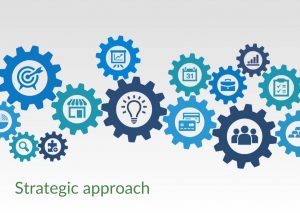Over the years I’ve been privileged to work with a whole host of inspiring individuals and organisations. I’ve worked alongside them to realise the benefits of a strategic, planned approach to communicating.
They have been at different stages and needed different outcomes from their work with me. Together we have assessed the advantages they would see from improved communication. And they have all benefitted from taking a moment to plan, instead of rushing in headlong.
So what advantages did they gain?
Reaching more clients and potential clients
People can only use your services if they know what you do, how it will benefit them and how to access what you offer.
The communication strategy I wrote for horticultural therapy charity, Ridgeline Trust, pulled together insight into their potential audiences (and how to reach them) in a single, easy-to-use document.
Telling a more coherent story
Your organisation does amazing things. You raise awareness and aspirations. You transform lives. But if your communication is ad hoc, these incredible achievements get lost in the jumble.
When I worked with Speakers for Schools to write their impact report, I looked at how we employed individual activities to tell the bigger story. This produced a far more compelling demonstration of the difference they make to young people.
Providing information sources that people trust and use
To take part in your work, your audiences need to access information that they believe in. By adopting a strategic, planned approach you give yourself time to find out what is credible to them.
When I worked with the University of Southampton Curriculum Innovation Programme, we knew that students didn’t just want to know what they would study in a module. They also wanted to know why it mattered. We covered both aspects on the programme website and that led to successful student sign-ups.
Making specialist information more accessible
You understand your communications, but does your audience? It’s easy to fall into the trap of not recognising your own jargon. Or assuming that your processes are obvious.
When I worked with the Research and Enterprise Services team at the University of Reading to write a handbook for researchers, there was a huge amount of information to bring together. We couldn’t change the amount of actions that researchers need to take once they have been awarded funding for their work. But we could present the details to them in a way that was easier to navigate. That way the researchers could get the ‘admin’ tasks done and move onto the thing they were more interested in – starting their research.
Giving clarity about who does what
One of the great things about a strategic plan is that is gives you opportunity to think through who does what. Work backwards from the outcomes you want to achieve and identify the actions that will make them happen. Then assign the activities.
When I wrote a network communication strategy for mental health charity, Mind, I included a section on resource. Communication is everyone’s responsibility so it’s good to be clear about the tasks that teams and individuals must take on.
For more details about these and other client projects that I have worked on in the last decade, take a look at the case-studies page of my website.
If you would like help with assessing the benefits of strategic communication for your organisation, please do get in touch for a no obligation chat.
Until next time
Sarah

